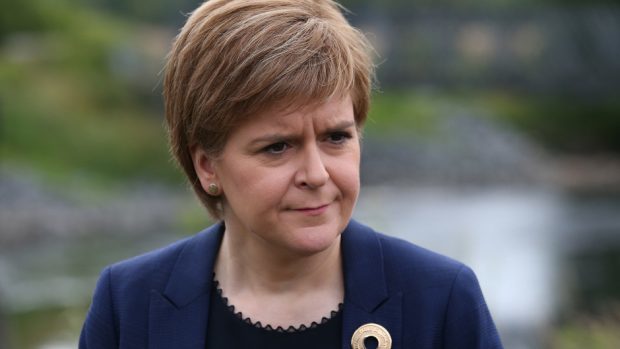Brad MacKay, Professor of Strategy in the University of St Andrews Management School.
The annual Government Expenditure and Revenue Scotland (GERS) figures have, in an annual (or even bi-annual) ritual, found themselves at the centre of political debate this week. The GERS are Scotland’s official government statistics, and showed the country’s public spending stood at £14.8 billion more than the revenues being raised for the last fiscal year.
The £14.8 billion deficit as a proportion of Gross Domestic Product (GDP), a key measure of national output, according to these figures, includes a geographic share of North Sea oil and stands at 9.5 per cent. This compares to a UK wide deficit of around 4 per cent, and exceeds by some margin the Eurozone’s stipulation that national deficits should not exceed 3 per cent of GDP (although, of course, many do).
The GERS figures indicate that public sector expenditure in Scotland stands at around £12,800 per person, or about £1,200 higher per person than the UK average. The challenging fiscal situation that Scotland finds itself in reflects a precipitous decline of estimated North Sea oil revenues from £1.8 billion to just around £60 million last year, somewhat offset by positive growth of non-North Sea on-shore revenues of £1.9 billion.
These figures are also against a backdrop of significant economic headwinds caused by the ‘out’ vote in the UK in-out referendum on the EU, which the Scottish government estimates could cost the Scottish economy between £1.7 and £11.2 billion over time. But do these figures really matter?
The GERS figures are largely an indicator of Scotland’s fiscal position with either a full range of tax raising and spending powers or with full independence. As it stands, much of the 9.5 per cent deficit is absorbed within the wider fiscal framework that Scotland shares with the rest of the UK. With the new devolution settlement Scotland will have control over revenue accounting for around half of its devolved expenditure, and about 15 per cent of benefit spending in Scotland.
As an indicator, then, with either the full range of tax raising powers or full independence, the Scottish government would have, and very likely will have difficult tax and spend choices to make in order to plug the fiscal hole in its finances. This is unless, of course, greater growth rates in either on-shore or off-shore revenue could and can be achieved.
Clearly the UK vote for Brexit poses a significant challenge, and possibly some opportunity, for the Scottish economy moving forward. The effects of Brexit, while uncertain, will depend on the nature of the negotiation, and the shape of a new set of trading arrangements between the EU, the UK and beyond. This is likely to take years to play out.
But of Scotland’s export markets, the EU accounts for around 15 per cent of Scottish exports, the Rest of the World accounts for a little over 15 per cent of Scottish exports, and the rest of the UK accounts for between 65 and 70 per cent of Scottish exports. This suggests that the Scottish economy is far more integrated with the UK economy than the EU economy, and for the foreseeable future, continues to be Scotland’s most important economic partner as it seeks to navigate challenging economic and political times.
